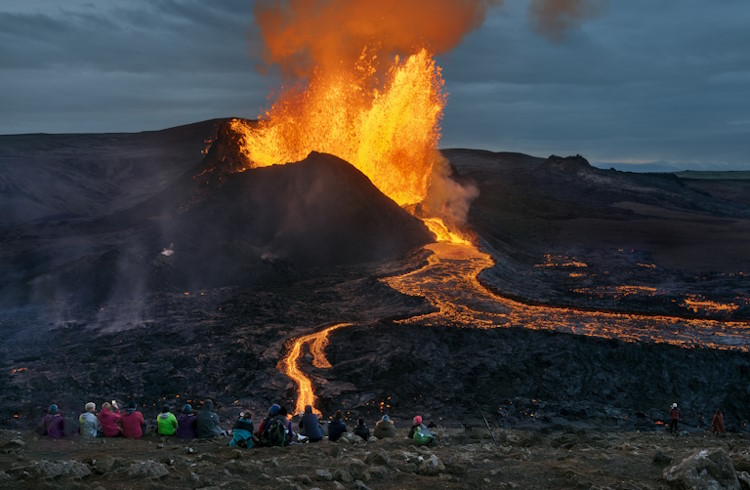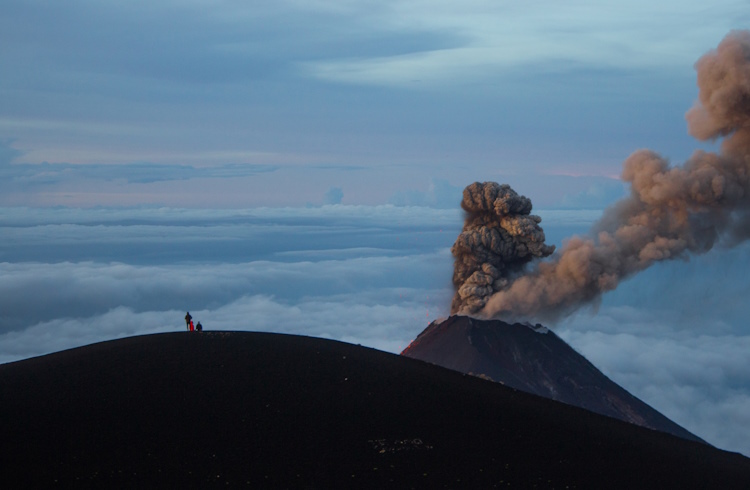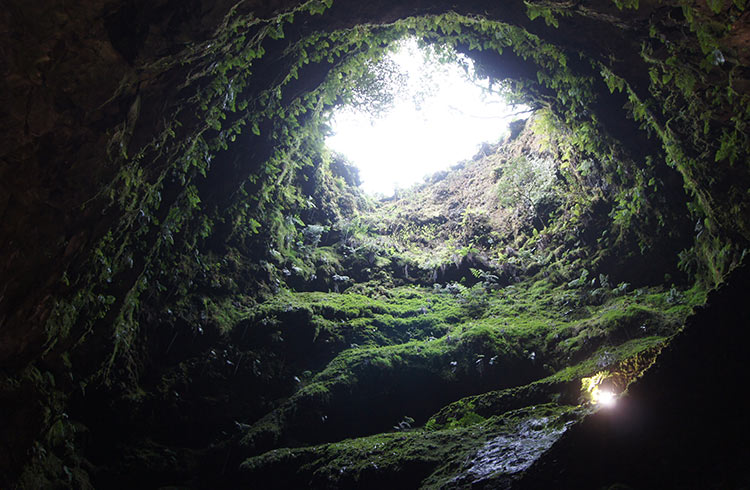Is Volcano Tourism Safe? What You Need to Know
From Iceland to Guatemala to Hawaii, active volcanoes are a major tourism draw. The thrill of visiting one is undeniable, but how dangerous is it? Hear from experts about the risks and how to plan your visit safely.
 Photo © Getty Images / Vladimir Borzykin
Photo © Getty Images / Vladimir Borzykin
In November 2023, after enduring weeks of minor earthquakes in Iceland, Grindavík photographer Ingi Thor and his family were considering a vacation to escape the constant tremors. But the situation escalated dramatically within hours. Large earthquakes shook the area, prompting Iceland’s emergency services to order an immediate evacuation upon discovering a magma chamber forming beneath the town.
“As I stood in my house that evening, I could see the walls moving and the grass outside rippling like waves. My daughter was in tears, and I was close to breaking down,” he remembers. “Having faced 12-meter-high waves with a broken engine near jagged cliffs as a sailor, I thought I had experienced real fear. But that was nothing compared to the moments when we were evacuated.”
After three years of “tourist eruptions” on the Reykjanes Peninsula, where visitors hiked to marvel at the lava, last November marked a turn for the worse. Continuous magma accumulation beneath the surface has led to several eruptions with severe consequences: cutting off water to the entire peninsula of 20,000 people (now reconnected), forcing evacuations of the Blue Lagoon, and most devastatingly, causing the permanent evacuation of Grindavík.
What began as a tourist attraction has now become a serious threat to the livelihood of the Reykjanes Peninsula. But despite the dangers, interest in volcano tourism continues to surge, not just in Iceland. This raises the question: how safe is volcano tourism?
- Understanding the risks of volcano tourism
- Types of volcanic eruptions
- How predictable are volcanic eruptions?
- Volcano tourism safety tips
- Cultural considerations when visiting volcanoes
Understanding the risks of volcano tourism
Visiting active volcanoes can be an exhilarating experience, as I can attest. Visiting the 2022 eruption of Fagradalsfjall on the Reykjanes Peninsula remains one of the most memorable days of my life.
But alongside the thrill of seeing new earth literally being molded in front of me, I remember the risks as well. Harmful gases collecting in valleys and being carried by the wind across hiking trails. News of a tourist going missing in the area due to bad weather. Video footage of other people walking across freshly hardened lava, only a thin crust between their feet and the molten lava below.
Visiting a volcano obviously comes with significant risks, but the combination of beauty and fear makes it one of the most exciting things you’ll ever do.
Types of volcanic eruptions
Volcanic eruptions can be broadly categorized into two types: effusive and explosive.
Effusive eruptions
Effusive eruptions involve a relatively gentle flow of lava, often erupting from a fissure with the lava slowly creating a broad, cone-shaped mountain of hardened lava. The main risks of effusive eruptions include lava flows and harmful, invisible gases, which can cause respiratory problems.
Explosive eruptions
On the other hand, explosive eruptions are exactly what they sound like: an explosion that might eject gas, ash, steam, lava, or all the above. On top of potential lava flows and volcanic gas emissions, other risks of an explosive eruption include ash fall, the potential for landslides and rockfalls, and other, more complex risks such as:
- Pyroclastic flows: A pyroclastic flow is a fast-moving and lethal cloud of hot gas and volcanic matter that causes severe burns, fatalities, and destruction of anything in its path.
- Volcanic blasts: With an explosive eruption, there’s also a chance of falling rocks that were blasted into the air and powerful ejections of hot gases, steam, and lava.
- Volcanic mudflows: Like wet concrete, a volcanic mudflow is a flowing mixture of volcanic debris and water that can sweep away people and buildings and contaminate rivers and water supplies.

How predictable are volcanic eruptions?
“Volcanoes are monitored with various sensors, including seismic stations, GPS for ground deformation, and sensors for increases in gas emissions. These measurements help us predict potential eruptions,” says Sara Barsotti, a Volcanic Hazards Coordinator at the Icelandic Meteorological Office.
“Access to satellite data and improved instruments has really improved our predictions in the past decade. Our models are also more advanced and far better at interpreting that real-time data,” Barsotti explains.
Despite these improvements, predicting volcanic activity remains complex. Each volcano is unique, and warning signs can vary. Volcanoes with long dormant periods leave us little historical data to analyze. And they also shift from calm to highly active rapidly, as seen with the 2019 White Island eruption in New Zealand, which killed 22 people. Although the alert level had been raised weeks before, the eruption's scale and suddenness surprised even those who were monitoring the volcano.
Volcano tourism safety tips
Here’s how to prepare for a visit to an active volcano:
- Start off with thorough research of your destination. A good first port-of-call are the websites of local authorities and travel companies, who publish the most up-to-date safety information.
“Scientists and local authorities are two parts of the same team, and they work closely together” says Maurizio Ripepe, a professor of geophysics and physical volcanology at the University of Florence. He also collaborates with the Italian Civil Defense on hazard assessments for Italy’s explosive volcanoes, like Mount Etna and Mount Stromboli, both popular tourist destinations. “If there’s a risk of an eruption, scientists will outline the potential scenarios, from which the authorities will plan the necessary actions, whether that’s closing access to part of the volcano or an entire evacuation”. - Familiarize yourself with the evacuation routes and procedures, which again differ between volcanoes. Pack essentials like a face mask, a first-aid kit, and sufficient water and food for your excursion.
- Visit with a licensed guide. Guides should be updated on the latest developments and be knowledgeable about their volcanoes of expertise and the emergency procedures. But don't assume – ask them. Some volcanoes require you to go with a guide, including the popular Acatenango Volcano in Guatemala, where you hike to the peak to watch the neighboring Fuego Volcano erupt somewhat regularly every 15 to 30 minutes.
Cultural considerations when visiting volcanoes
It’s also important to take into consideration any local beliefs and traditions when visiting a volcano. Some indigenous communities consider certain volcanoes sacred. The most well-known is Mauna Kea in Hawaii, which holds significant cultural value to the Native Hawaiians as a sacred place of worship and ancestral connection. On the slopes of the volcano, you might find stone and wooden altars, historic burial sites, and other sacred places. Remember to do your research, and always walk with care and respect.


2 Comments
Another important tip - don't assume the volcano tour is safe because the excursion is a 'go'. Don't assume the operator of the holiday tour, or the operator of the volcano tour is aware of the status of the potential eruption. ASK THEM. When was their last update? What is the current eruption risk rating? What does that translate into? ASK.
I lost a friend and colleague, his wife and daughter because of negligence on the part of the tour operators.
So sorry for your loss, Andrew. A great tip to add indeed.
All the best,
Milly